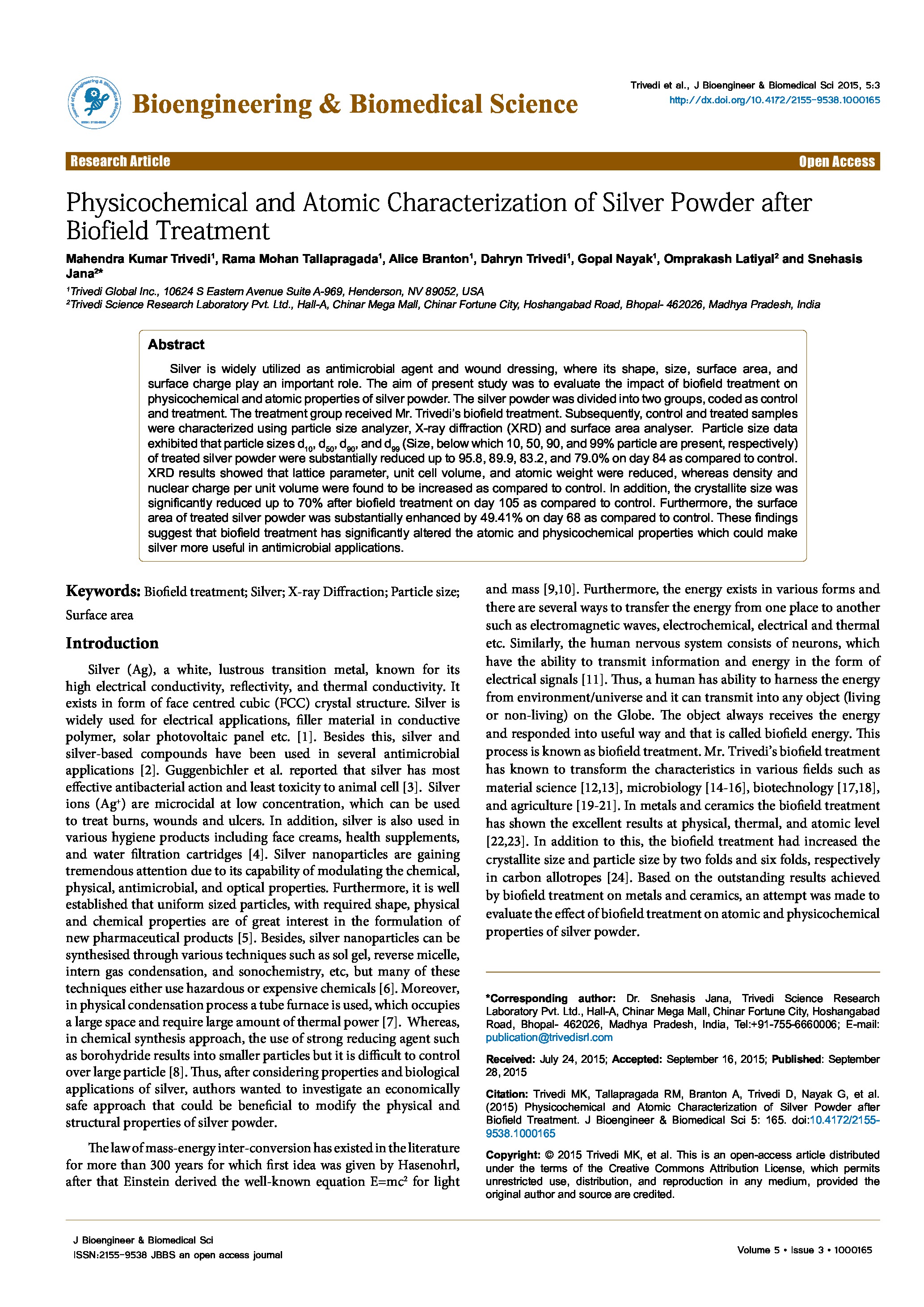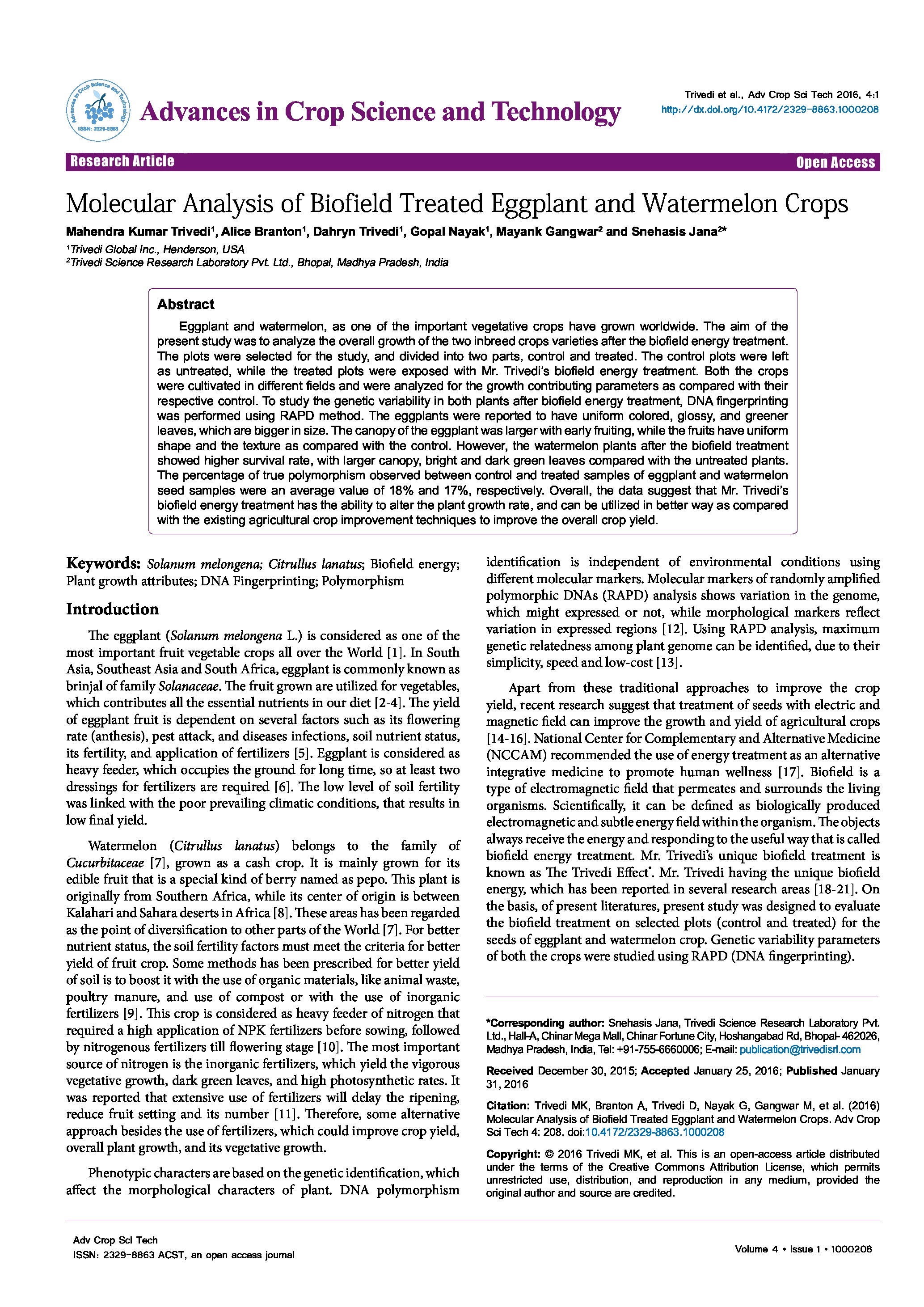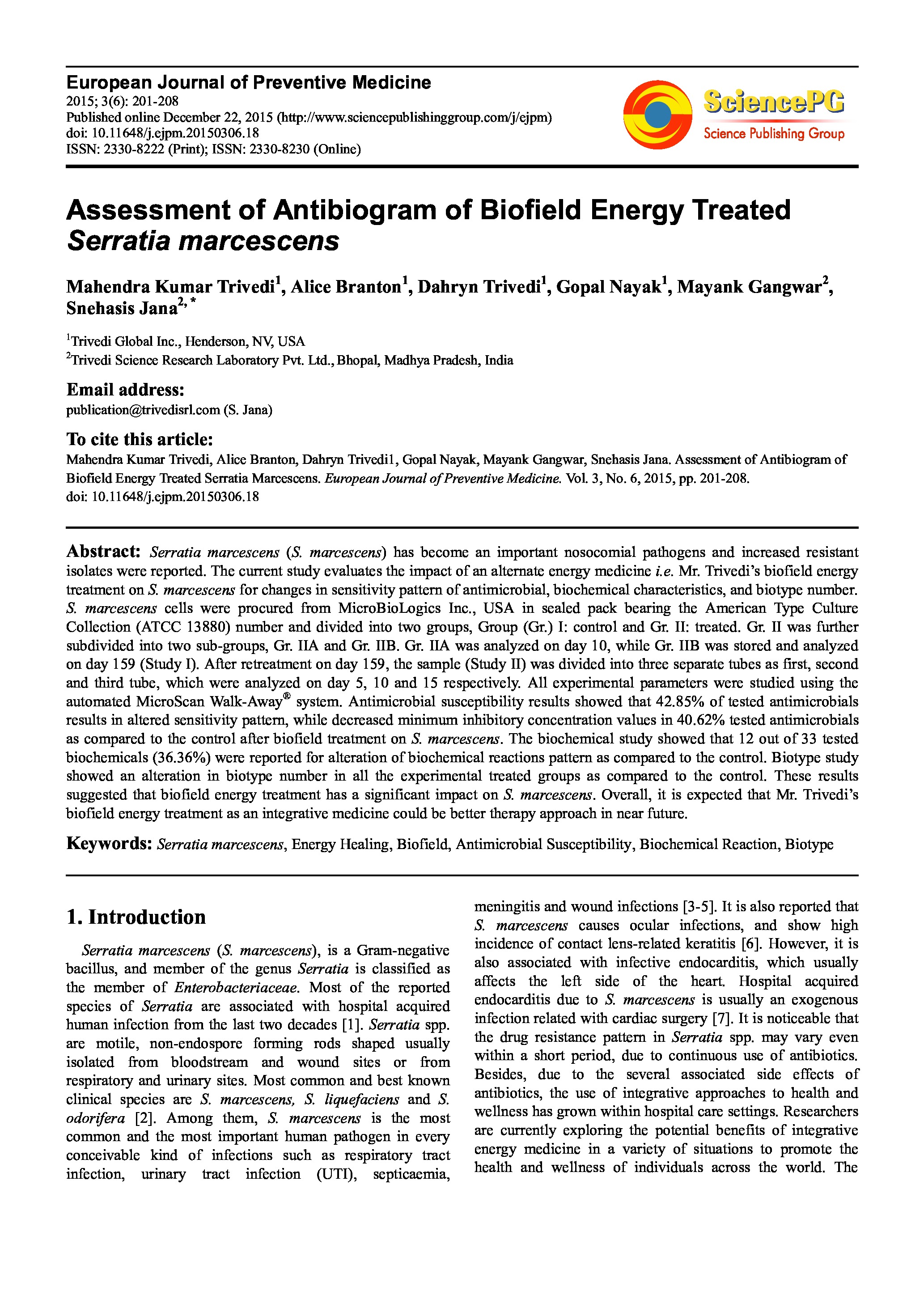Date of upload:
16.12.2016
Co-author:
Mahendra Kumar Trivedi, Rama Mohan Tallapragada, Alice Branton, Dahryn Trivedi, Omprakash Latiyal, Snehasis Jana
Abstract:
Silver is widely utilized as antimicrobial agent and wound dressing, where its shape, size, surface area, and surface charge play an important role. The aim of present study was to evaluate the impact of biofield treatment on physicochemical and atomic properties of silver powder. The silver powder was divided into two groups, coded as control and treatment. The treatment group received Mr. Trivedi’s biofield treatment. Subsequently, control and treated samples were characterized using particle size analyzer, X-ray diffraction (XRD) and surface area analyser. Particle size data exhibited that particle sizes d10, d50, d90, and d99 (Size, below which 10, 50, 90, and 99% particle are present, respectively) of treated silver powder were substantially reduced up to 95.8, 89.9, 83.2, and 79.0% on day 84 as compared to control. XRD results showed that lattice parameter, unit cell volume, and atomic weight were reduced, whereas density and nuclear charge per unit volume were found to be increased as compared to control. In addition, the crystallite size was significantly reduced up to 70% after biofield treatment on day 105 as compared to control. Furthermore, the surface area of treated silver powder was substantially enhanced by 49.41% on day 68 as compared to control. These findings suggest that biofield treatment has significantly altered the atomic and physicochemical properties which could make silver more useful in antimicrobial applications.




